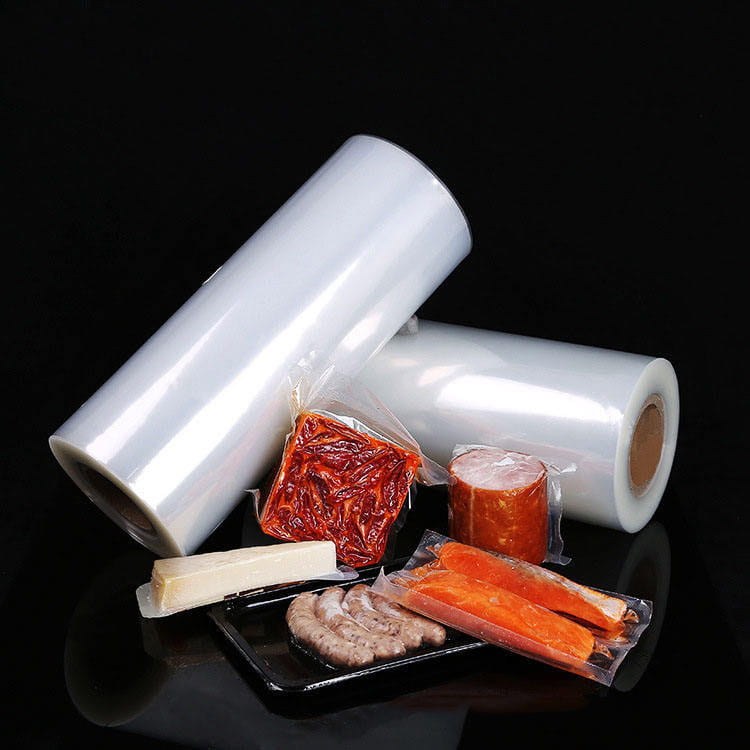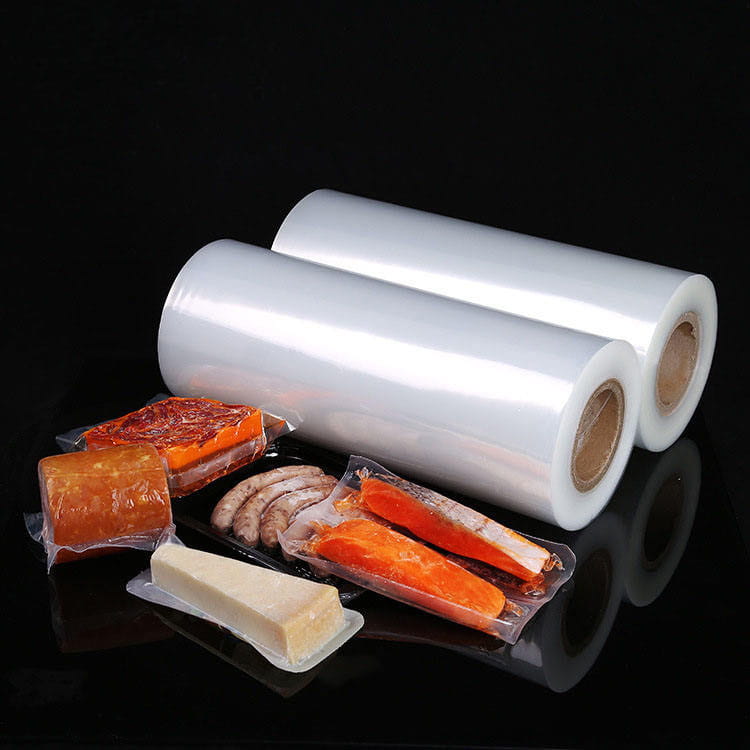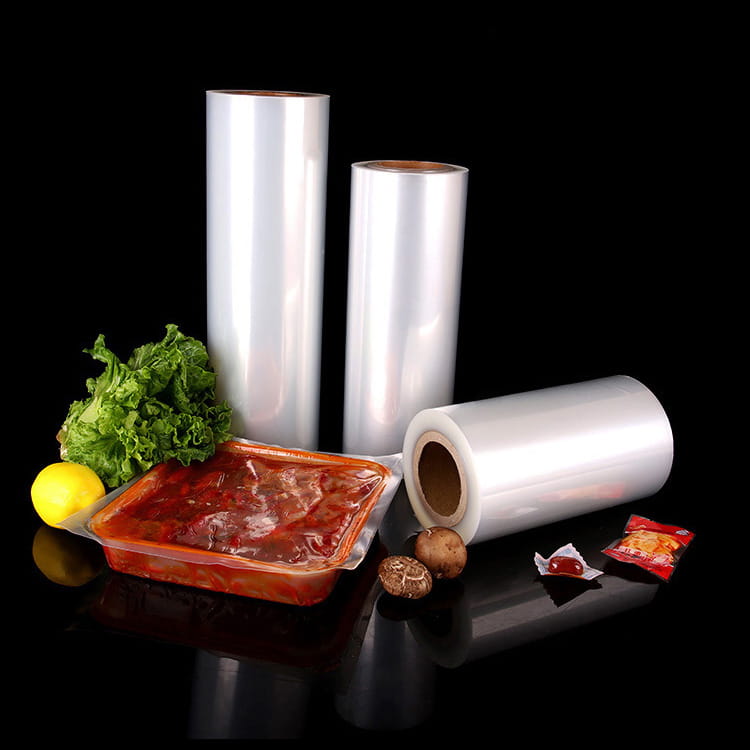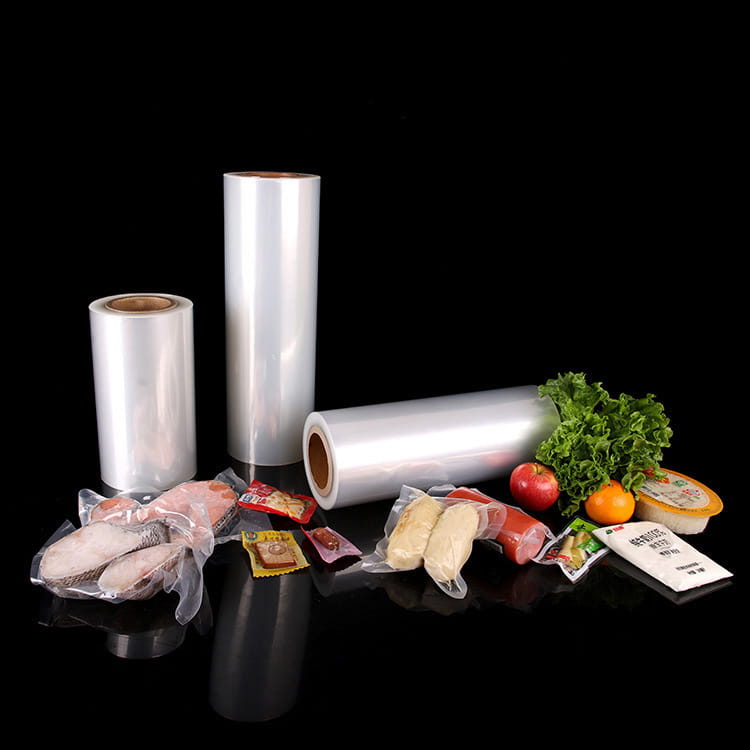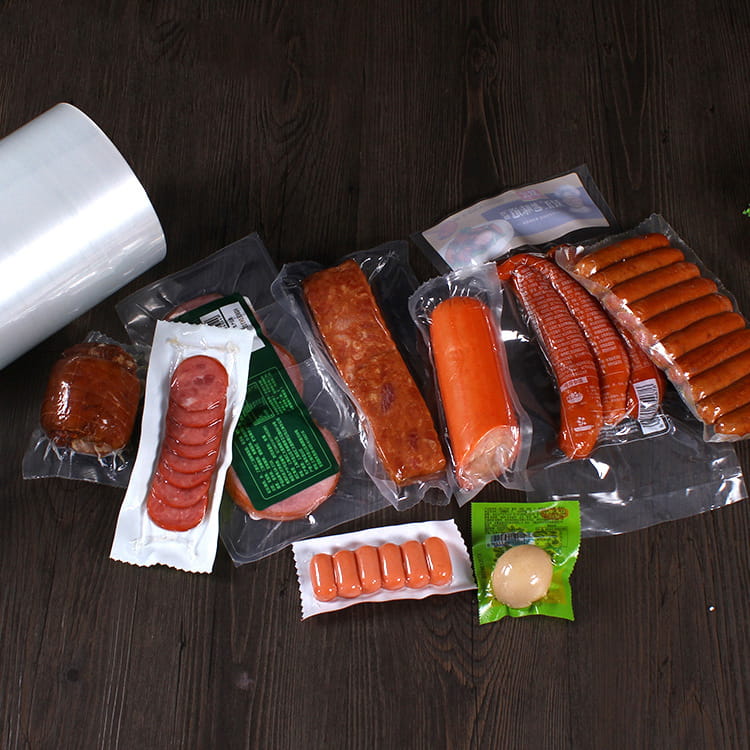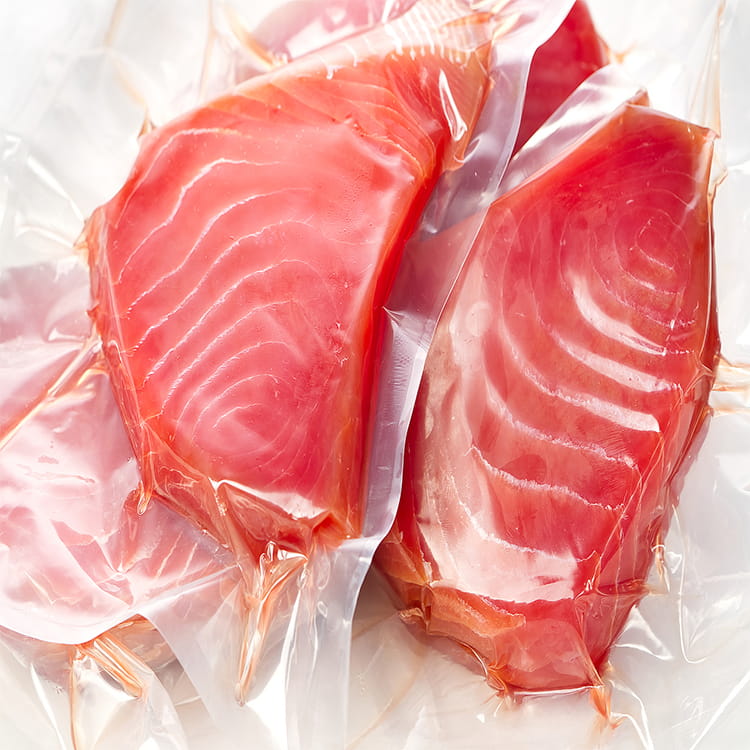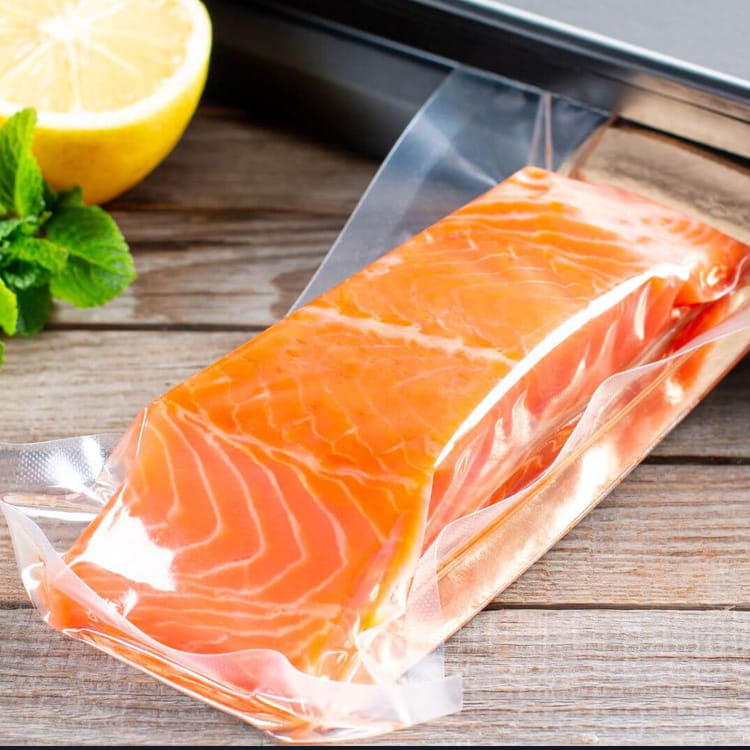Introduction: Beyond the Monolith - The Power of Layered Engineering
In the world of advanced protective packaging, a simple sheet of plastic is rarely just that. For demanding applications that involve extreme heat, stringent barrier requirements, and critical mechanical strength, a monolithic material simply cannot deliver the necessary performance. This is where sophisticated co-extrusion technology comes into play, creating a synergistic system far greater than the sum of its parts. The 7 layers of asymmetrical co-extruded high-temperature film represent a pinnacle of this engineering philosophy. To the untrained eye, it appears as a single, uniform film. In reality, it is a meticulously assembled, micron-thin sandwich where each layer is assigned a specific, critical function. Understanding how these layers work in concert is key to appreciating the superior performance this film offers over simpler alternatives.
The Foundational Concepts: Co-extrusion and Asymmetrical Design
Before dissecting the individual layers, it is essential to grasp the two core principles that define this film’s structure: co-extrusion and asymmetrical design.
Co-extrusion is a sophisticated manufacturing process where multiple different polymer melts are forced simultaneously through a single die to produce a multi-layered film. This is not a process of lamination, where pre-made layers are glued together. Instead, the layers are fused together in a molten state, creating a permanent, inseparable bond with no risk of delamination. This process allows for the combination of polymers that would be impossible or impractical to combine otherwise, leveraging the unique properties of each resin within a single, unified structure.
The asymmetrical design refers to the intentional and non-identical arrangement of layers on either side of the film’s central core. Unlike a symmetrical film (e.g., A/B/C/B/A), an asymmetrical film (e.g., A/B/C/D/E/F/G) features a different sequence, thickness, and material composition on its two faces. This design is not arbitrary; it is a purposeful engineering decision. It allows each surface of the film to be optimized for its specific end-use function. One side can be engineered for superior heat sealability and product contact compatibility, while the opposite side can be tailored for high ink adhesion, abrasion resistance, or interaction with processing machinery. This asymmetrical structure is a key differentiator, providing targeted functionality that a symmetrical film cannot achieve.
Deconstructing the 7-Layer Architecture: A Functional Analysis
The standard 7 layers of asymmetrical co-extruded high-temperature film can be broken down into their primary functional groups. It is more instructive to analyze them by their role rather than by a simple numbered sequence, as the exact material choice for each role can vary based on the specific application requirements.
The Outer Functional Layers: The Interface with the World
The outermost layers, often referred to as the skin layers, are the film’s interface with the external environment and the sealing machinery. Their composition is critical for performance and processing.
Sealant Layer (Inner Skin): This is the layer that will be fused to itself (fin-seal) or to another substrate (lap-seal) to create the hermetically sealed package. Its properties are paramount. For a high-temperature film, this layer must possess excellent heat seal integrity even after exposure to sterilization cycles like autoclaving or radiation. It must seal reliably across a wide temperature range, providing a strong, consistent seal that is resistant to contamination and stress cracking. Furthermore, if it is in direct contact with the product (e.g., a medical device or food), it must be compliant with relevant regulations and be inert, ensuring no interaction or leaching occurs.
Treatment/Printing Layer (Outer Skin): The opposite outer layer is designed for external interaction. Its primary functions are to accept and retain surface treatments like corona treatment or flame treatment, which are essential for achieving excellent ink adhesion for high-quality printing and branding. This layer is also formulated for durability, offering resistance to abrasion, scuffing, and chemicals it might encounter during distribution and handling. A robust outer layer protects the integrity of the printed information and the package itself, maintaining a professional appearance and ensuring legibility of critical instructions.
The Internal Barrier Layers: The Guardians of Protection
Sandwiched between the outer layers are the heart of the film’s protective functionality: the barrier layers. This is where the “high-performance” claim is truly validated.
Primary Barrier Layer(s): This is the main line of defense against external elements. The composition of this layer is chosen based on the specific threat profile. For moisture barrier protection, a polymer like ethylene vinyl alcohol (EVOH) or polyvinylidene chloride (PVDC) might be used. For oxygen barrier properties, EVOH is a common choice due to its exceptional ability to impede gas transmission. In applications requiring aroma barrier or lipid resistance (grease and oil barrier), specific polyamides or other specialty polymers are employed. In many 7-layer structures, there may be more than one dedicated barrier layer to combat multiple permeation threats simultaneously.
Secondary Barrier/Structural Layers: Adjacent to the primary barrier layers are often secondary layers that serve a dual purpose. They provide additional, complementary barrier properties and act as tie layers or adhesive layers. Their chemistry is designed to bond the primary barrier layer—which can sometimes have poor adhesion properties—to the other polymers in the structure. They ensure the entire film remains a cohesive unit, preventing layer separation under stress and maintaining the integrity of the barrier system. These layers contribute significantly to the overall puncture resistance and durability of the film.
The Core Layer: The Backbone of the Structure
At the very center of the film lies the core layer. This is typically the thickest layer in the structure and serves as the mechanical backbone. Its primary function is to provide bulk, stiffness, and overall mechanical strength. It contributes massively to the film’s tensile strength, stiffness, and dimensional stability, especially when exposed to heat. A stable core prevents the film from warping, shrinking, or distorting during the sealing process or subsequent sterilization. It is the foundation upon which the other functional layers are built, allowing them to perform their specialized duties without compromising the package’s physical form.
Table 1: Functional Layer Breakdown of a Typical 7-Layer Asymmetrical Film
| Layer Position | Primary Function | Key Properties | Common Material Types |
|---|---|---|---|
| Outer Skin (1) | Printing & Abrasion Resistance | Ink Adhesion, Treatability, Scuff Resistance | Polyester (PET), Nylon (PA), Polypropylene (PP) |
| Tie Layer (2) | Adhesion & Compatibility | Bonding Strength, Chemical Compatibility | Functionalized Polyolefins (e.g., tie-layer resins) |
| Barrier Layer (3) | Oxygen & Aroma Barrier | Low Gas Transmission, Clarity | Ethylene Vinyl Alcohol (EVOH) |
| Core Layer (4) | Mechanical Strength & Bulk | Stiffness, Puncture Resistance, Dimensional Stability | Polypropylene (PP), Nylon (PA) |
| Barrier Layer (5) | Moisture & Grease Barrier | Low Moisture Vapor Transmission, Lipid Resistance | Polyamide (Nylon), specialized copolymers |
| Tie Layer (6) | Adhesion & Compatibility | Bonding Strength, Heat Resistance | Functionalized Polyolefins |
| Sealant Layer (7) | Heat Sealing & Product Contact | Seal Integrity, Clarity, Compliance | Polypropylene (PP), Specialty Polyolefins |
The Synergy in Action: How Collaboration Unlocks Performance
The true genius of the 7 layers of asymmetrical co-extruded high-temperature film is not in the layers themselves, but in their engineered interaction. This synergy is what creates a material that can withstand complex challenges.
Consider the process of autoclave sterilization for medical devices. The package is subjected to high-pressure saturated steam at temperatures often exceeding 120°C (250°F). A simple film would fail catastrophically. In the 7-layer film, each layer responds in a coordinated way:
- The sealant layer must maintain its seal strength and not become brittle or leak.
- The core and structural layers provide the dimensional stability to prevent warping or shrinking, which could compromise the seal or crush the device.
- The barrier layers ensure that no moisture permeates into the package during the cycle and, crucially, that the sterile barrier remains intact after the cycle is complete, protecting the device until the moment of use.
This performance is a direct result of the layers working together. The strength of the core allows the sealant layer to be optimized for sealing, not for bulk. The barrier layers are protected from physical damage by the tough outer and core layers, allowing them to be formulated for pure barrier performance without needing to be mechanically robust. This division of labor is the cornerstone of high-performance film design.
Furthermore, the asymmetrical design allows for cost optimization without sacrificing performance. A high-cost, high-performance polymer can be used in a thin, critical barrier layer, while less expensive polymers can be used in the thick core layer or the outer skin. This achieves the best possible performance-to-cost ratio, a critical factor for buyers and wholesalers looking for reliable and economically viable packaging solutions.
Key Performance Advantages and Industry Applications
The collaborative function of the seven layers translates into a set of tangible performance advantages that meet specific needs across various high-stakes industries.
Superior Barrier Properties: The multi-layer approach allows for the creation of a formidable barrier against a wide spectrum of elements. This is not just about keeping moisture or oxygen out; it is about preserving product integrity. For moisture-sensitive electronics, it prevents corrosion. For food products, it extends shelf life by preventing oxidation and preserving freshness. For medical devices, it maintains a sterile internal environment, which is a matter of patient safety.
Exceptional Mechanical Strength and Durability: The combination of a robust core layer and supporting tie layers results in a film with outstanding resistance to punctures, tears, and abrasions. This puncture-resistant quality is vital for protecting products with sharp edges, such as surgical instruments or electronic components. It also ensures the package survives the rigors of the supply chain, from manufacturing and transportation to storage and handling, reducing the risk of product loss and returns.
Reliable High-Temperature Performance: This is a defining characteristic. The film is engineered to maintain its structural integrity, barrier properties, and seal strength before, during, and after exposure to high temperatures. This makes it an ideal choice for applications like retort packaging (where food is cooked inside the package), hot-fill packaging, and all forms of medical sterilization, including steam autoclaving, ethylene oxide (EtO) processing, and gamma radiation.
Design Flexibility and Customization: The co-extrusion process offers immense flexibility. The thickness of each layer can be precisely adjusted, and the specific polymer grades within each functional category can be selected to meet exact application requirements. This means the 7 layers of asymmetrical co-extruded high-temperature film is not a single product but a platform technology that can be tailored for optimal performance in a specific use case, whether the priority is ultimate clarity, a specific barrier property, or a particular sealing characteristic.


 English
English عربى
عربى



